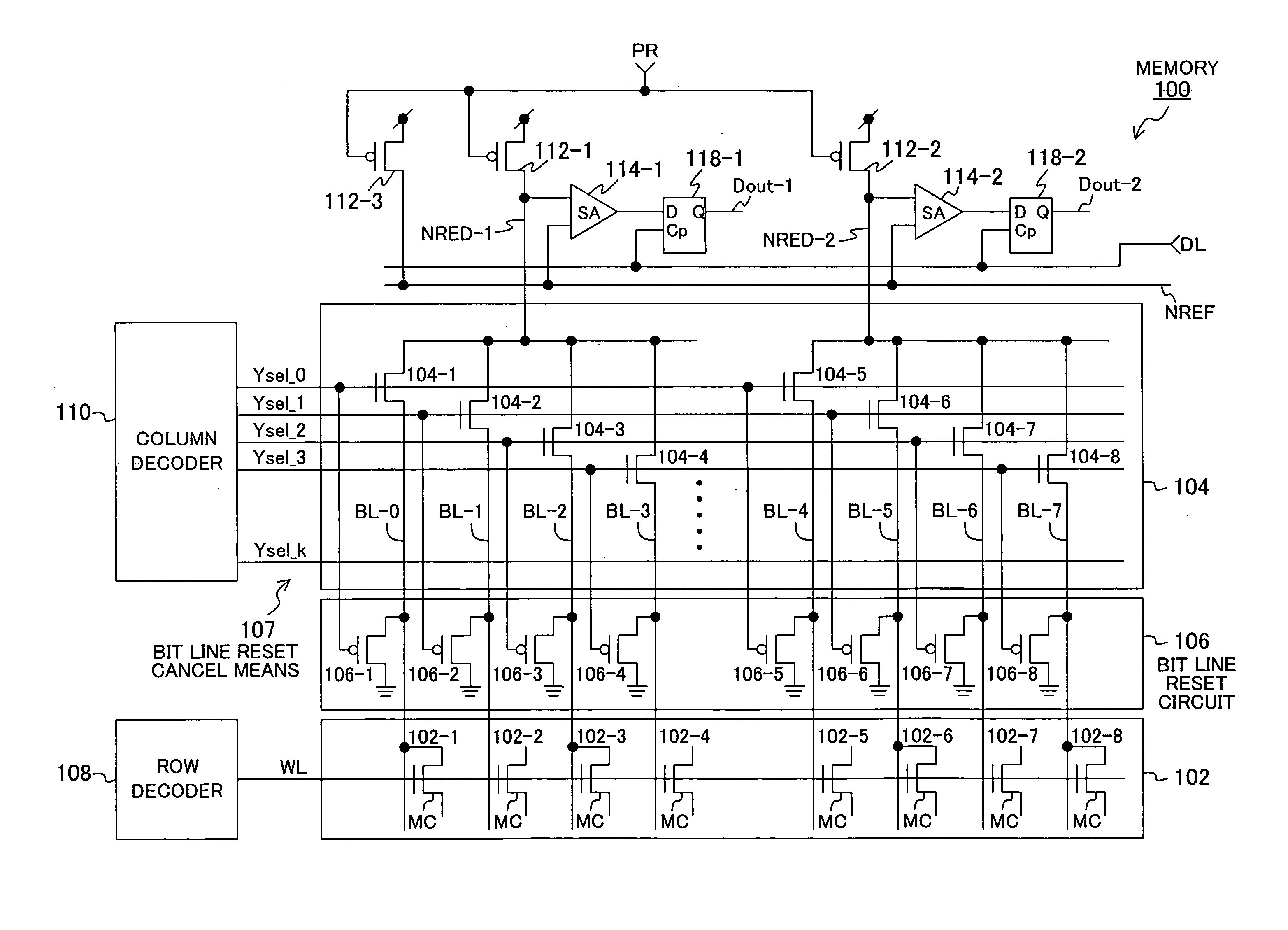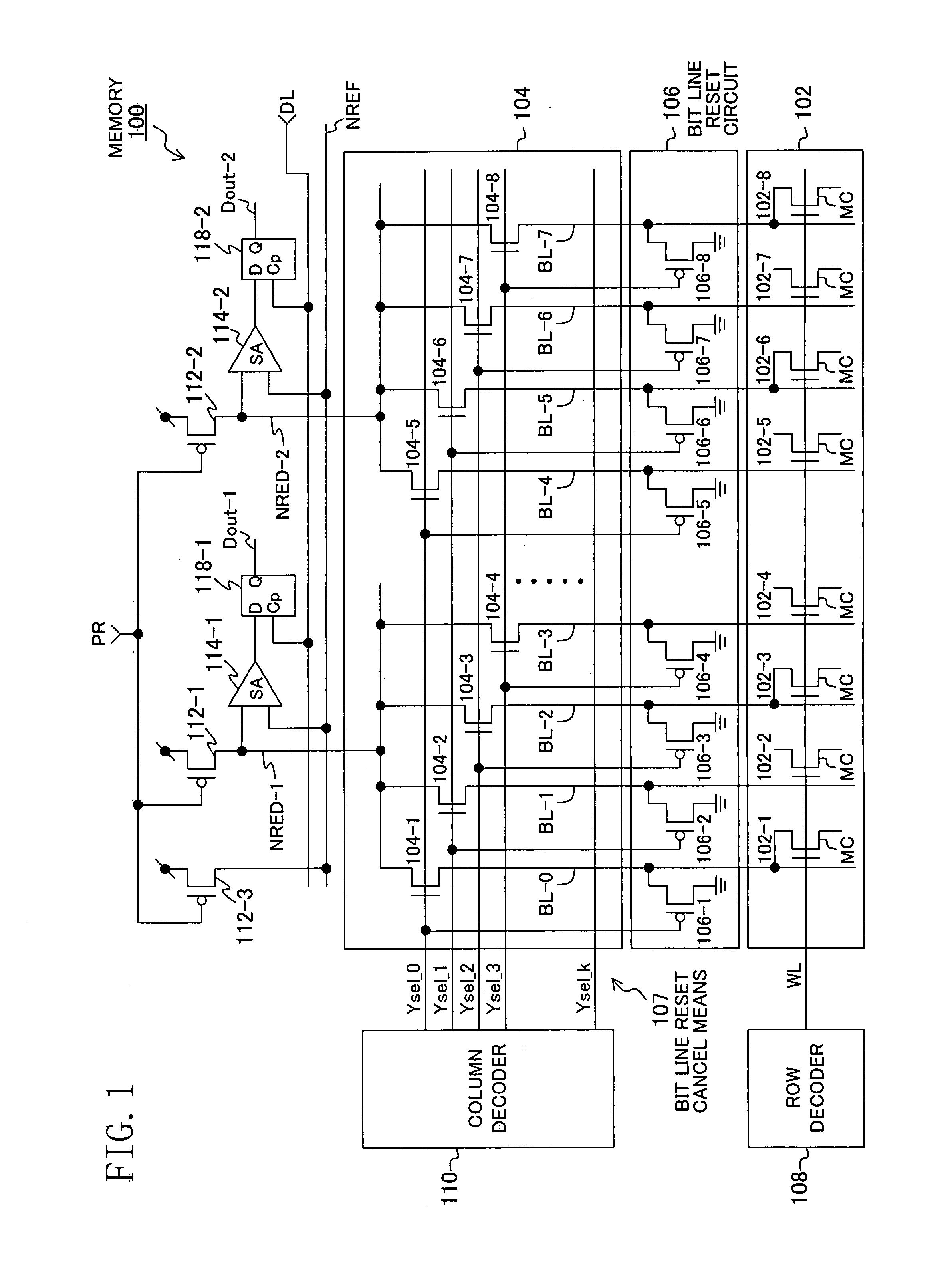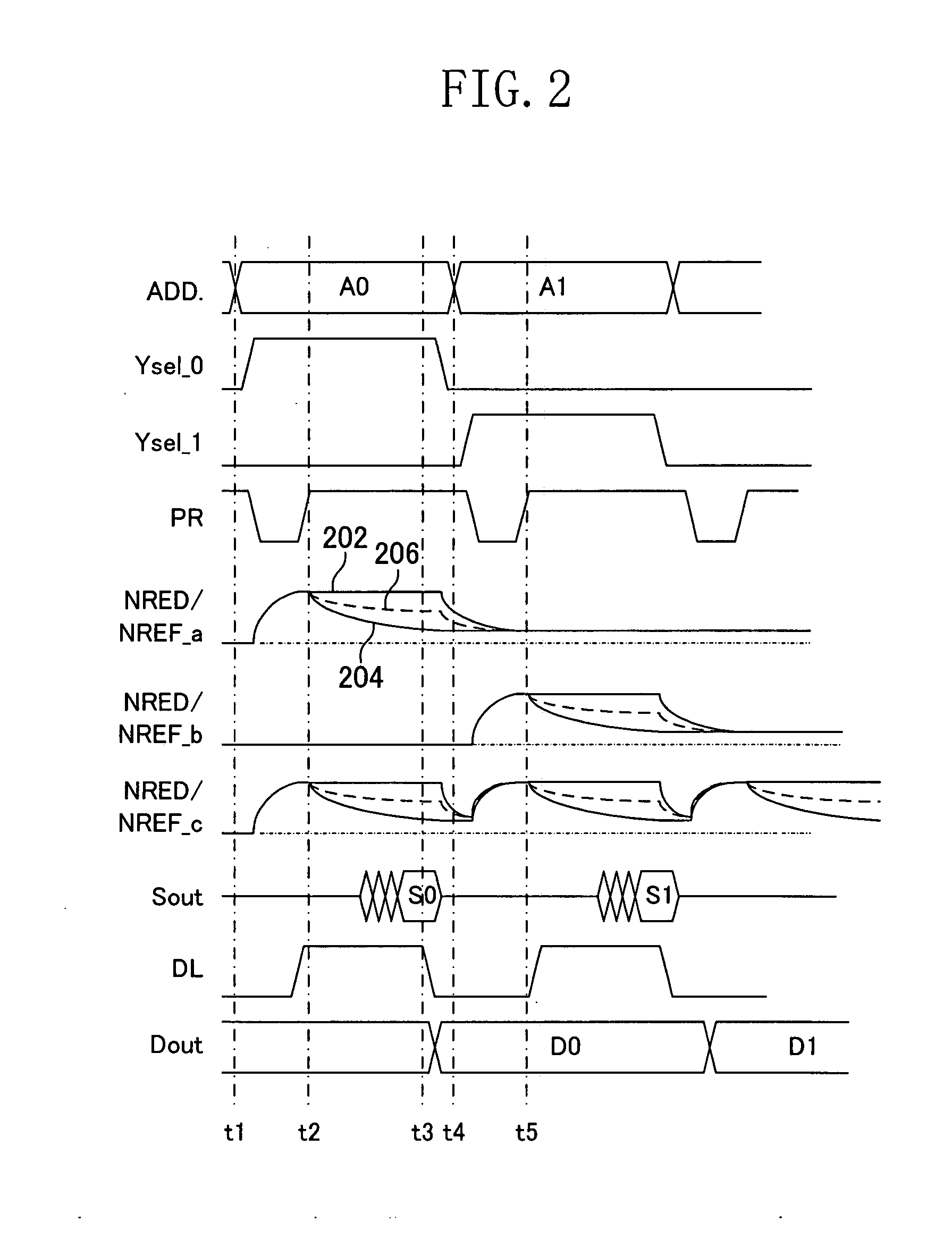Semiconductor memory device, and read method and read circuit for the same
a memory device and memory technology, applied in the field of memory devices of semiconductors, can solve the problems of affecting the read determination operation, blocking stable read operation, controlling parallel operation, etc., and achieve the effect of shortening the read cycle and simple circuit configuration
- Summary
- Abstract
- Description
- Claims
- Application Information
AI Technical Summary
Benefits of technology
Problems solved by technology
Method used
Image
Examples
embodiment 1
[0064]FIG. 1 shows an exemplary configuration of a semiconductor memory device of Embodiment 1 of the present invention, in which identical circuit components to those in FIG. 7 are denoted by the same reference numerals. A memory 100 includes a row decoder 108 and a column decoder (selection signal generation circuit) 110. The row decoder 108 selects one of word lines WL running in a memory cell array 102 in response to a row address received externally, to apply a read voltage to the gate electrodes of memory cells MC 102-1 to 102-8. The column decoder 110 generates and outputs bit line selection signals Ysel_0 to Ysel_k for driving a column selection gate 104 in response to a column address received externally. N-channel selection transistors 104-1 to 104-8 in the column selection gate (connection circuit and column selection circuit) 104, driven with the bit line selection signals Ysel_0 to Ysel_k from the column decoder 110, selectively connect bit lines BL-0 to BL-7 that are c...
embodiment 2
[0073]In the configuration shown in FIG. 1, the selection transistors 104-1 to 104-8 in the column selection gate 104 are N-channel transistors while the bit line reset circuit 106 is composed of the P-channel transistors 106-1 to 106-8, so that the selection signals Ysel_0 to Ysel_k from the column decoder 110 can be used, as common control signals. In this configuration, however, since the bit line reset circuit 106 composed of the P-channel transistors performs the discharge to the ground potential, the potential equal to the threshold voltage of the P-channel transistors remains as the bit line potential after the reset. Therefore, the effect of noise discussed in the prior art problem, which occurs when charge remains in a number of bit lines and the residual charge is discharged at one time via memory cells at the time of transition to a different word line, remains to some extent.
[0074]FIG. 3 shows an exemplary circuit configuration in which the residual charge after the bit ...
embodiment 3
[0078]In FIGS. 1 and 3, shown were examples where the column selection gates 104 and 302 were composed of one stage of the selection transistors 104-1 to 104-8 and 302-1 to 302-8 connected to the bit lines. The column selection gate may otherwise be composed of a plurality of serially connected stages for the purpose of reducing the number of bit line selection signals from the column decoder 110 required.
[0079]FIG. 5 shows an exemplary memory configuration in which the column selection gate is composed of two serially connected stages of selection transistors. In a memory 500 shown in FIG. 5, the column selection gate has a two-stage structure including a first column selection gate (first column selection circuit) 505 composed of first N-channel transistors 505-1, 505-2, 505-5 and 505-6 and a second column selection gate (second column selection circuit) 506 composed of second N-channel transistors 506-1 and 506-2. The N-channel transistors are respectively driven with bit line se...
PUM
 Login to View More
Login to View More Abstract
Description
Claims
Application Information
 Login to View More
Login to View More - R&D
- Intellectual Property
- Life Sciences
- Materials
- Tech Scout
- Unparalleled Data Quality
- Higher Quality Content
- 60% Fewer Hallucinations
Browse by: Latest US Patents, China's latest patents, Technical Efficacy Thesaurus, Application Domain, Technology Topic, Popular Technical Reports.
© 2025 PatSnap. All rights reserved.Legal|Privacy policy|Modern Slavery Act Transparency Statement|Sitemap|About US| Contact US: help@patsnap.com



